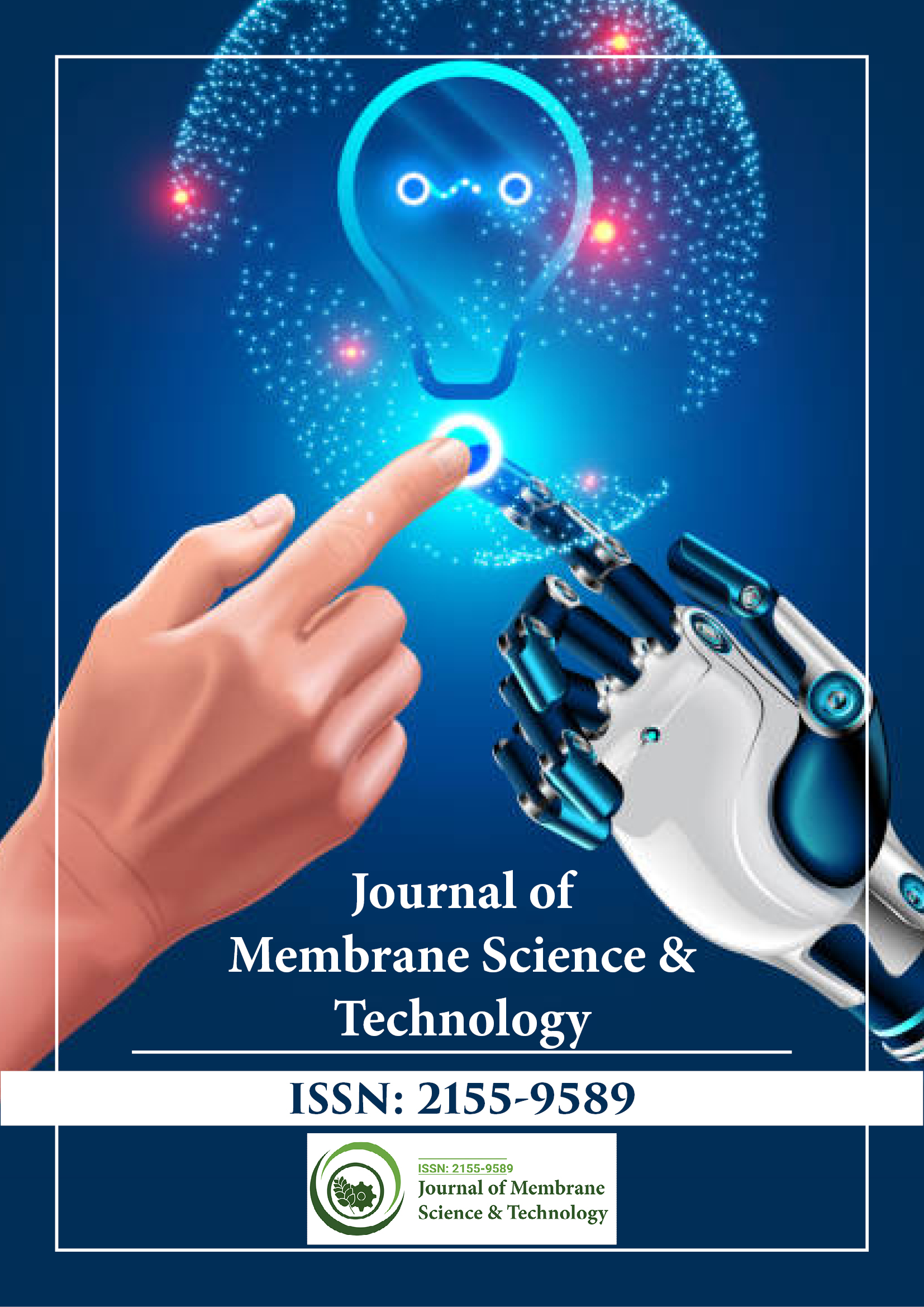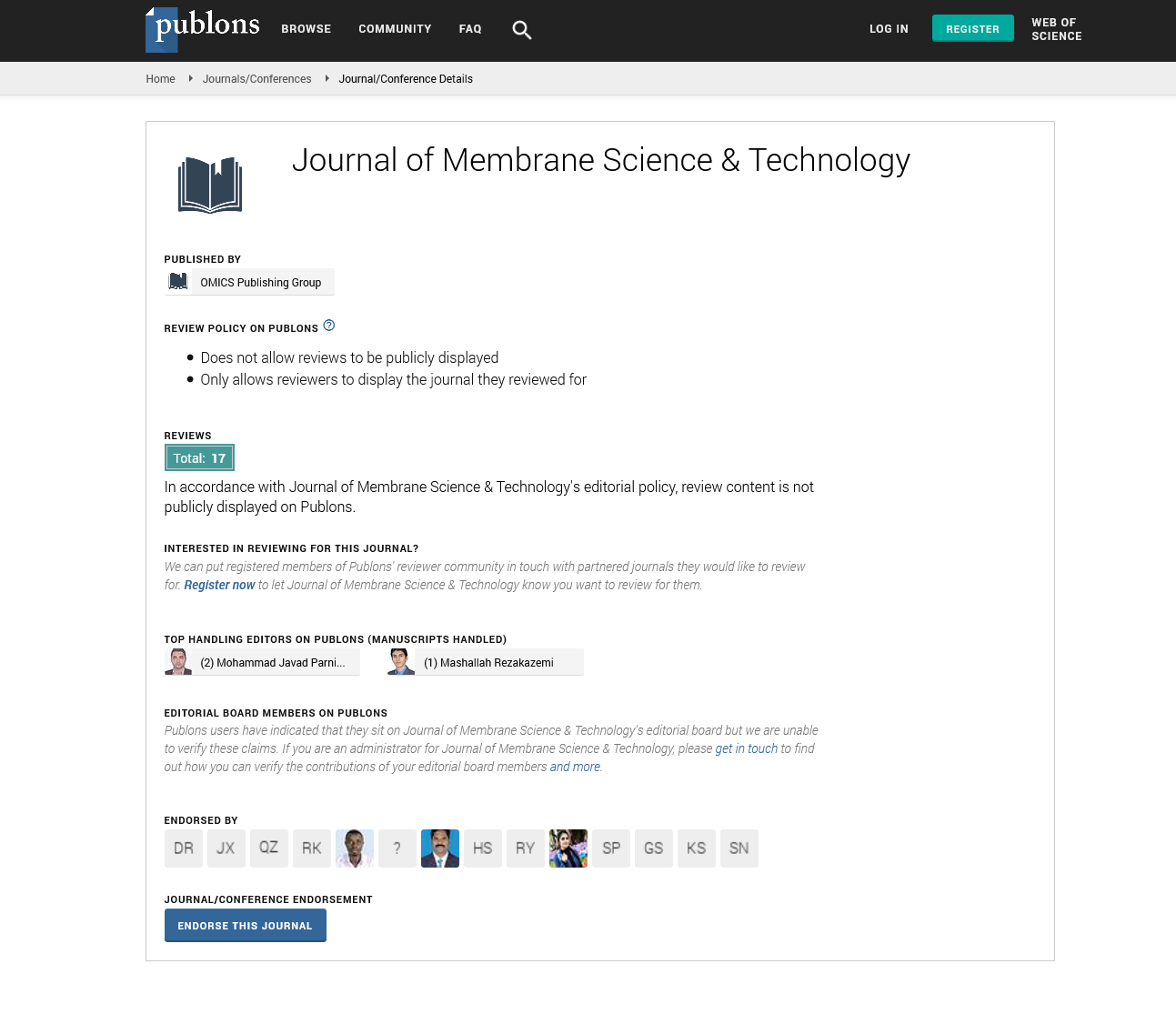Indexed In
- Open J Gate
- Genamics JournalSeek
- Ulrich's Periodicals Directory
- RefSeek
- Directory of Research Journal Indexing (DRJI)
- Hamdard University
- EBSCO A-Z
- OCLC- WorldCat
- Proquest Summons
- Scholarsteer
- Publons
- Geneva Foundation for Medical Education and Research
- Euro Pub
- Google Scholar
Useful Links
Share This Page
Journal Flyer

Open Access Journals
- Agri and Aquaculture
- Biochemistry
- Bioinformatics & Systems Biology
- Business & Management
- Chemistry
- Clinical Sciences
- Engineering
- Food & Nutrition
- General Science
- Genetics & Molecular Biology
- Immunology & Microbiology
- Medical Sciences
- Neuroscience & Psychology
- Nursing & Health Care
- Pharmaceutical Sciences
Opinion Article - (2025) Volume 15, Issue 1
Reverse Osmosis System: Efficient Water Purification for Modern Needs
Michel Biston*Received: 31-Jan-2025, Manuscript No. JMST-25-29275; Editor assigned: 03-Feb-2025, Pre QC No. JMST-25-29275 (PQ); Reviewed: 17-Feb-2025, QC No. JMST-25-29275; Revised: 24-Feb-2025, Manuscript No. JMST-25-29275 (R); Published: 03-Mar-2025, DOI: 10.35248/2155-9589.25.15.412
Description
Reverse Osmosis (RO) systems represent a sophisticated water purification technology designed to remove impurities and contaminants by forcing water through a semipermeable membrane. These systems have become increasingly popular in various settings such as households, industries, and municipal water treatment facilities because they efficiently provide clean, safe and great-tasting water. The ability of RO systems to eliminate dissolved salts, chemicals, bacteria and viruses has made them essential in addressing modern water quality challenges.
The fundamental mechanism of an RO system revolves around its semipermeable membrane, which permits only water molecules to pass while blocking a wide array of contaminants. Initially, water undergoes a pre-filtration process where larger particles like sediment, chlorine and other impurities are removed to protect the delicate RO membrane from damage. Once pre-filtered, the water is pressurized and pushed against the membrane. This pressure is crucial, as it forces water molecules to move through the membrane, leaving behind dissolved solids such as salts, heavy metals, pesticides, bacteria and viruses that cannot pass through. After this membrane filtration, the purified water typically flows through post-filters, which serve to polish the water by improving its taste and quality before it reaches the faucet. Meanwhile, the contaminants and impurities filtered out are flushed away as reject or wastewater.
An RO system consists of several integral components that work together to ensure effective purification. Sediment filters remove larger particles like sand, dirt and rust, while carbon filters eliminate chlorine and organic compounds that might affect taste or damage the membrane. The core of the system is the RO membrane, responsible for filtering dissolved solids and microorganisms. Purified water is stored in a dedicated tank, ready for immediate use and then often passes through a post-carbon filter to further enhance taste and remove any residual odors before being dispensed through a dedicated faucet.
One of the primary advantages of reverse osmosis systems is their high removal efficiency, capable of eliminating up to 99% of contaminants including dissolved salts, bacteria, viruses and various chemicals. This results in water that is not only safe to drink but also free from unpleasant tastes and odors caused by substances such as chlorine. These systems contribute significantly to public health by reducing the risks associated with waterborne diseases. Furthermore, RO systems have environmental benefits by reducing the reliance on bottled water, thereby helping to decrease plastic waste. Their versatility makes them suitable for residential use, commercial applications and large-scale industrial processes.
Reverse osmosis technology finds applications across a broad spectrum of sectors. In residential settings, RO systems provide safe drinking and cooking water, improving the quality of life for families. Industries, including food and beverage processing, pharmaceuticals and electronics manufacturing, use RO systems to ensure the purity of water essential for their products and processes. On a municipal scale, large water treatment plants deploy RO technology to produce potable water that meets stringent safety standards. Additionally, in agriculture, purified water from RO systems helps prevent soil salinization, ensuring sustainable irrigation practices.
Maintaining RO systems properly is vital to their efficiency and longevity. Filters, including pre-filters and post-filters, typically require replacement every six to twelve months to avoid clogging and contamination. The RO membrane itself usually lasts two to three years but may need cleaning if fouling or clogging occurs. One challenge of RO technology is the production of wastewater as some contaminated water is rejected and flushed away, although modern systems are continuously improving to reduce this waste. Another consideration is energy consumption, as pressurizing water requires power. However, advancements in energy efficiency are helping make these systems more sustainable.
Innovation continues to shape the future of reverse osmosis technology. New membrane materials are being developed to resist fouling and allow for higher flow rates, enhancing overall performance. Energy recovery devices, especially in large-scale systems, contribute to reducing power consumption. The integration of smart monitoring systems equipped with sensors and Internet of Things (IoT) technology enables real-time tracking of water quality and system performance, facilitating timely maintenance and operational efficiency. Moreover, the combination of RO systems with renewable energy sources such as solar power is expanding access to clean water in remote or off-grid areas.
Conclusion
Overall, reverse osmosis systems play an indispensable role in securing safe, clean water globally. By efficiently removing a wide range of contaminants, these systems protect public health and promote environmental sustainability. Ongoing improvements in membrane technology, energy efficiency and intelligent system monitoring are making RO systems increasingly affordable and accessible to a wide array of users, from individual households to large communities. In the face of rising global water scarcity, reverse osmosis offers a reliable and scalable solution to enhance water security and ensure the availability of clean water for future generations.
Citation: Biston M (2025). Reverse Osmosis System: Efficient Water Purification for Modern Needs. J Membr Sci Technol. 15:412.
Copyright: © 2025 Biston M. This is an open-access article distributed under the terms of the Creative Commons Attribution License, which permits unrestricted use, distribution, and reproduction in any medium, provided the original author and source are credited.

